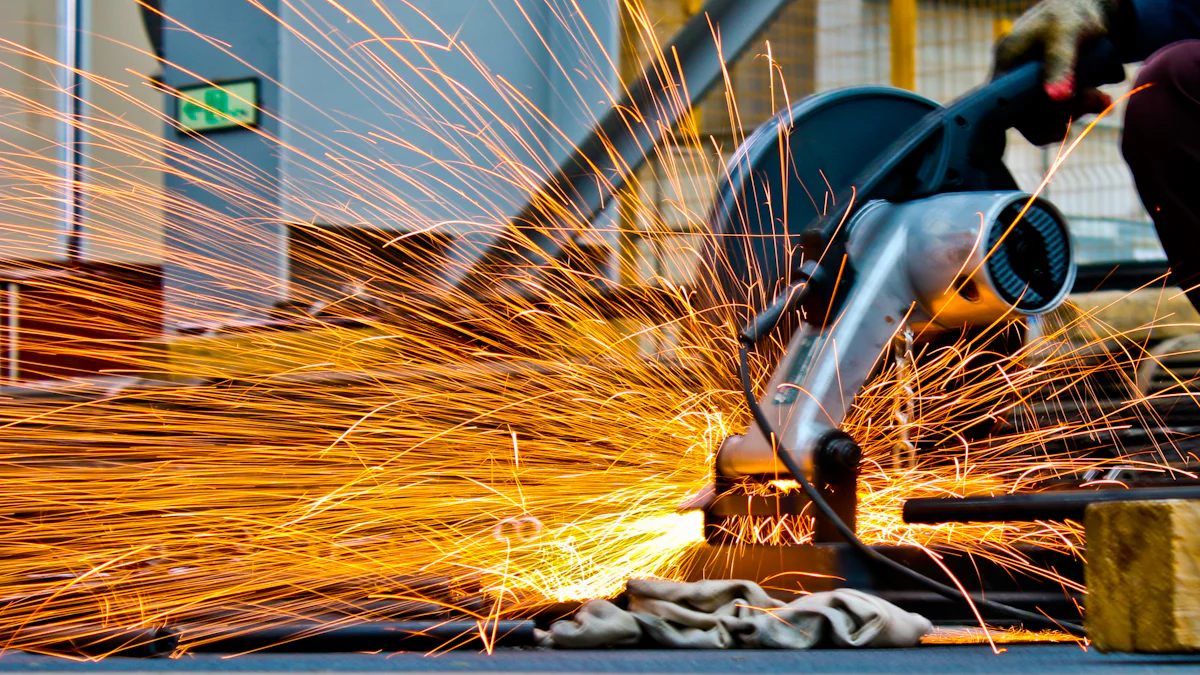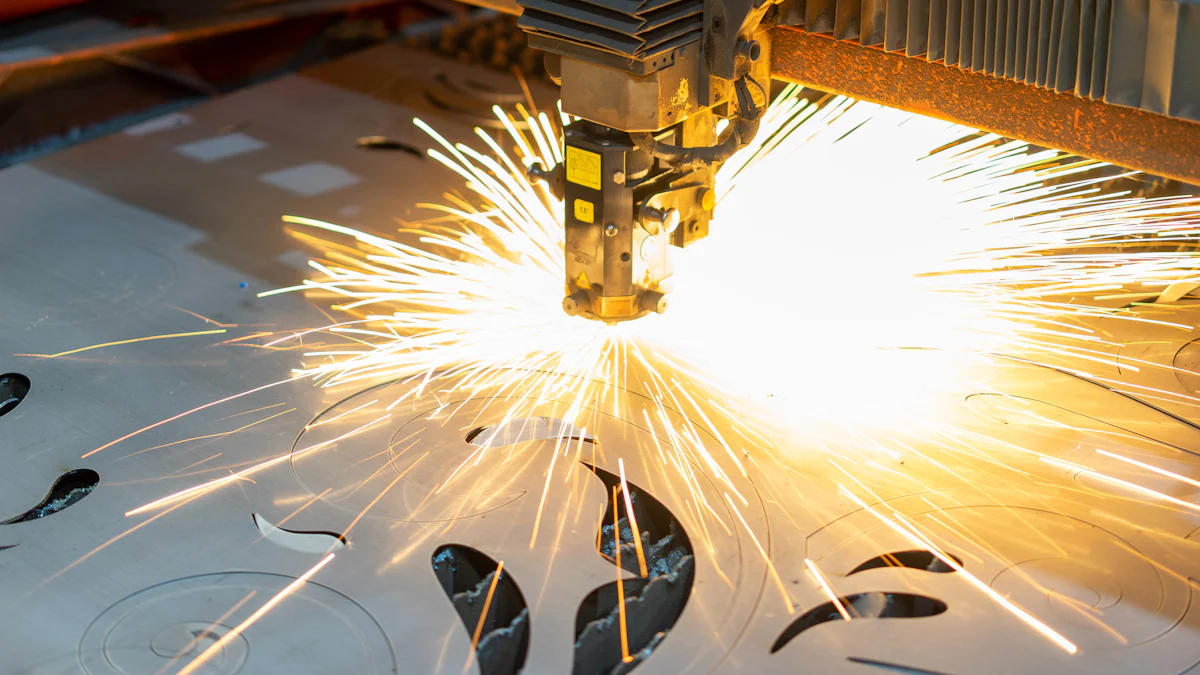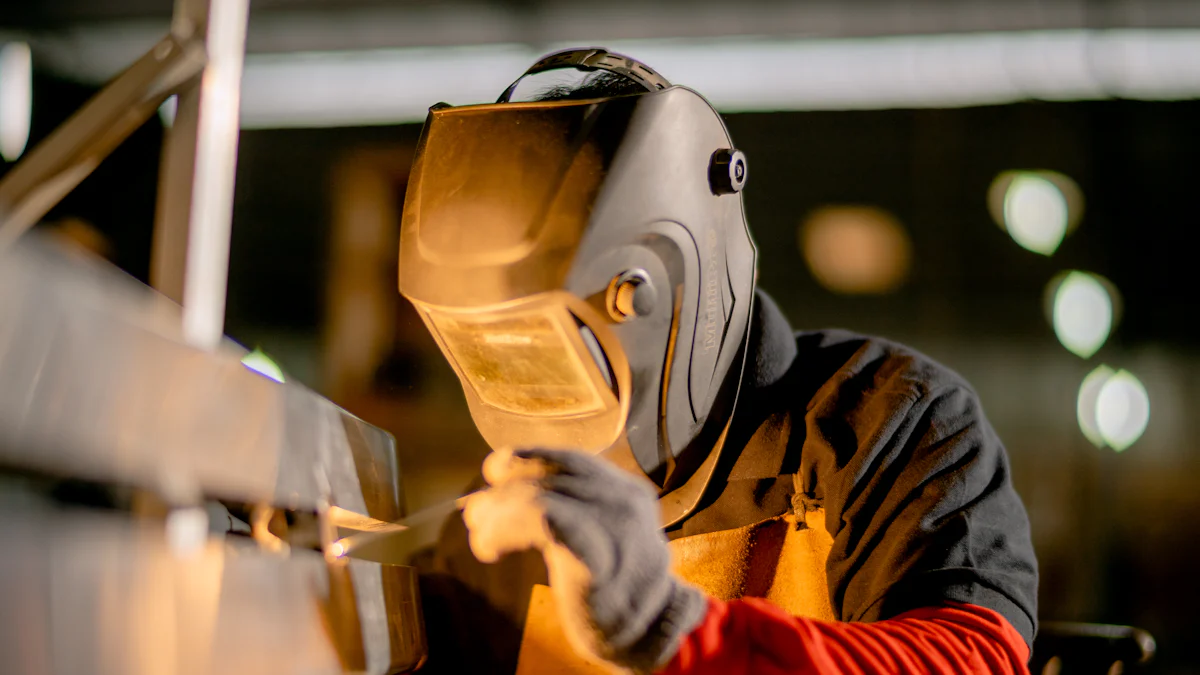
Cutting sheet metal requires the right tools for precision and safety. The tools to cut sheet metal vary widely, each designed for specific tasks. Using improper tools can lead to injuries. Statistics show that hand lacerations and eye injuries are common in metalworking. Proper tools enhance efficiency and precision. Safety remains paramount. Wearing protective gear like safety glasses and gloves is essential. Following equipment guidelines prevents accidents. A clean workspace also contributes to safer operations.
Tools to Cut Sheet Metal

Manual Cutting Tools
Tin Snips
Tin snips provide an effective way to cut soft metals like aluminum and copper. These tools come in various types, including straight-cut, left-cut, and right-cut versions. Each type serves a specific cutting direction. Tin snips are ideal for cutting sheet metal, gutters, and metal roofing.
Hacksaws
Hacksaws offer precision and control when cutting sheet metal. The fine-toothed blade of a hacksaw makes it suitable for detailed work. Users should ensure the blade remains sharp for optimal performance. Hacksaws work best on thinner sheets of metal.
Hand Shears
Hand shears excel in making precise cuts in smaller projects. These tools resemble large scissors and can handle various thicknesses of metal. Hand shears provide a clean cut without much effort. Regular maintenance keeps the blades sharp and effective.
Power Cutting Tools
Angle Grinders
Angle grinders are indispensable for cutting metal. Equipped with a 4 ½” cut-off wheel, these tools make quick work of cutting tasks. Angle grinders provide speed and efficiency, especially for larger projects. Users must wear protective gear due to the sparks generated during use.
Jigsaws
Jigsaws offer versatility in cutting sheet metal. These tools use a reciprocating blade that moves up and down. Jigsaws can cut intricate shapes and curves. Selecting the right blade ensures clean and precise cuts.
Nibblers
Nibblers serve as a straightforward improvement for cutting sheet metal. These power tools remove small pieces of metal as they cut, reducing waste. Nibblers work efficiently on various thicknesses and types of metal. They provide a smooth edge, minimizing the need for additional finishing.
Specialized Cutting Tools
Plasma Cutters
Plasma cutters offer precise and clean cuts in sheet metal. These tools use a high-velocity jet of ionized gas to melt the metal. Plasma cutters excel in cutting thick and thin metals alike. The process results in minimal distortion and a smooth finish.
Laser Cutters
Laser cutters use a focused beam of light to cut through metal. These tools provide unmatched precision and accuracy. Laser cutters can handle complex shapes and fine details. CO2 laser cutters are common in the industry and versatile in their applications.
Water Jet Cutters
Water jet cutters use a high-pressure stream of water mixed with abrasive particles to cut metal. These tools can cut through thick materials with ease. Water jet cutters produce a clean edge without heat distortion. This method is ideal for metals sensitive to high temperatures.
Safety Tips and Best Practices

Personal Protective Equipment (PPE)
Gloves
Gloves protect hands from sharp edges and hot surfaces. Workers should use synthetic puncture-resistant gloves or leather gloves. These materials provide durability and comfort. Proper gloves reduce the risk of cuts and burns.
Safety Glasses
Safety glasses shield eyes from flying debris and sparks. Metalworking often generates small particles that can cause eye injuries. Using safety glasses with side shields offers additional protection. Clear vision remains crucial for precision work.
Ear Protection
Ear protection guards against hearing damage from loud tools. Power tools like angle grinders produce high noise levels. Earplugs or earmuffs help minimize noise exposure. Consistent use of ear protection preserves hearing health.
Tool Maintenance
Regular Inspection
Regular inspection ensures tools remain in good working condition. Workers should check for wear and tear on blades and moving parts. Identifying issues early prevents accidents. Well-maintained tools perform more efficiently.
Proper Storage
Proper storage extends the lifespan of tools. Storing tools in a dry, organized space prevents rust and damage. Workers should clean tools before storage to remove metal shavings and debris. An orderly tool storage system enhances workplace safety.
Workspace Organization
Clean and Clear Workspace
A clean and clear workspace reduces the risk of accidents. Workers should keep the area free of clutter and obstacles. Proper disposal of metal scraps and waste maintains a safe environment. A tidy workspace improves efficiency and focus.
Proper Lighting
Proper lighting is essential for precision and safety. Adequate illumination helps workers see fine details and avoid mistakes. Using adjustable task lights can enhance visibility in specific areas. Good lighting reduces eye strain and fatigue.
Using the right tools to cut sheet metal ensures precision and safety. Proper tools minimize risks and improve efficiency. Safety remains a priority in metalworking. Wearing protective gear like gloves and safety glasses prevents injuries. Maintaining tools and keeping a clean workspace enhances performance. Achieving precision requires using the correct tools and following best practices. Efficient cutting leads to high-quality results.
See Also
Top Tips for Warm Winter Vibes with Fluffy Sockies
Discovering Diverse Sock Options for Both Genders
